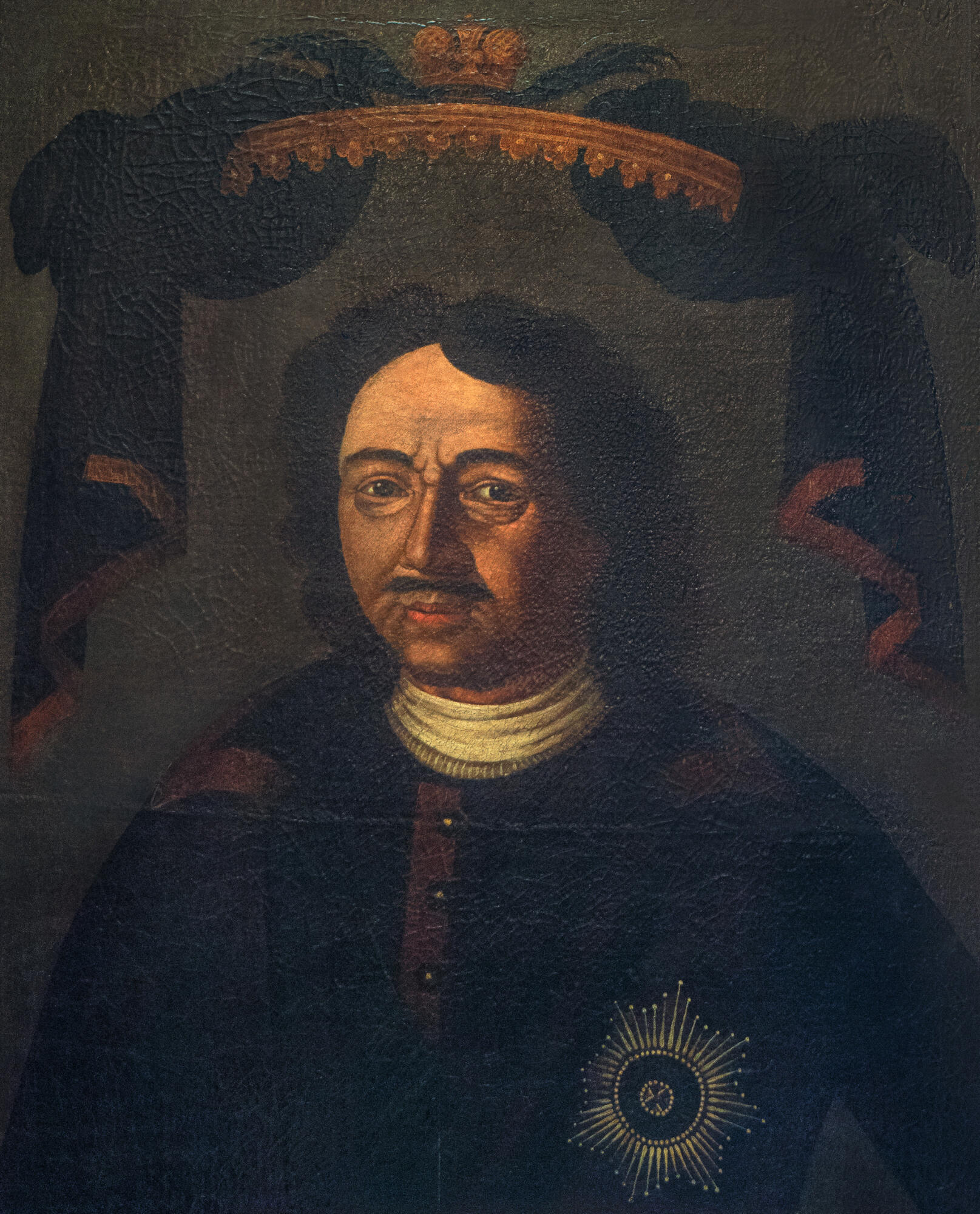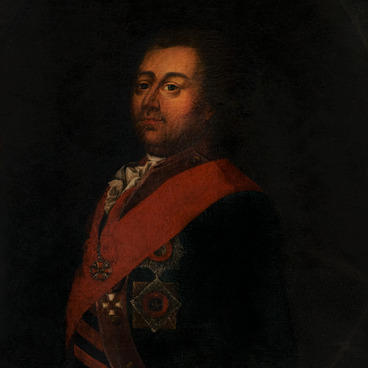Peter I Alekseevich, nicknamed the Great, is the youngest son of Tsar Alexei Mikhailovich and his second wife Natalia Naryshkina, the last Tsar of All Russia from the Romanov dynasty and the first Emperor of All Russia (since 1721). Peter was proclaimed tsar in 1682 at the age of 10, and after 7 years he began to rule independently. From a young age, he showed interest in science and the foreign lifestyle.
Portrait of Peter I
Creation period
18th century
Dimensions
77,1x61,3 cm
Technique
canvas, oil
Collection
Exhibition
0
Open in app#4
Portrait of Peter I
#8
#9
‘At the turn of the 17th century, a brilliant Tsar appeared in Russia, full of extraordinary energy, with immense strength of mind …’
wrote the 19th-century historian Konstantin Aksakov
#5
It is unknown who created the portrait, but it is assumed that the iconographic source for it was the work of the French artist Louis Caravaque. The fact is that not every painter was admitted to the royal person. Therefore, only one master painted the sovereign — most often he was invited from abroad, and then this portrait was used by other artists as an exemplary one. Such a work cannot be considered a simple copy since the result was an independent creation from an artist’s own perspective. This portrait proves the point, being an unknown painter’s interpretation with the enhanced details of parsuna.
Parsuna was the name for the first ceremonial portraits in the history of Russian art. In terms of technique and imagery, it was considered a transitional genre between iconography and realism. A certain touch of severity makes this Peter’s portrait different from similar ones: the dramatic effect is emphasized through a crown with gloomy draperies — such a detail is not present in any of the other works. Usually, artists portrayed the emperor with an energetic, purposeful burning gaze, however, in this painting he looks tired, sad, and sick. Most likely, the portrait was made shortly before Peter’s death, who caught a cold while saving people during the flood and died a few days later.
Peter I visited Arkhangelsk three times and opened shipyards there: he used this city to establish domestic and international trade.
The portrait entered the collection of the State Museum Association ‘Artistic Culture of the Russian North’ from Solvychegodsk. Most likely, it used to belong to the famous entrepreneurs Stroganovs.
Parsuna was the name for the first ceremonial portraits in the history of Russian art. In terms of technique and imagery, it was considered a transitional genre between iconography and realism. A certain touch of severity makes this Peter’s portrait different from similar ones: the dramatic effect is emphasized through a crown with gloomy draperies — such a detail is not present in any of the other works. Usually, artists portrayed the emperor with an energetic, purposeful burning gaze, however, in this painting he looks tired, sad, and sick. Most likely, the portrait was made shortly before Peter’s death, who caught a cold while saving people during the flood and died a few days later.
Peter I visited Arkhangelsk three times and opened shipyards there: he used this city to establish domestic and international trade.
The portrait entered the collection of the State Museum Association ‘Artistic Culture of the Russian North’ from Solvychegodsk. Most likely, it used to belong to the famous entrepreneurs Stroganovs.
#7
Ministry of Culture of the Russian Federation
read morehide
00:00
00:00
1x
Portrait of Peter I
Creation period
18th century
Dimensions
77,1x61,3 cm
Technique
canvas, oil
Collection
Exhibition
0
Open in app
Share



